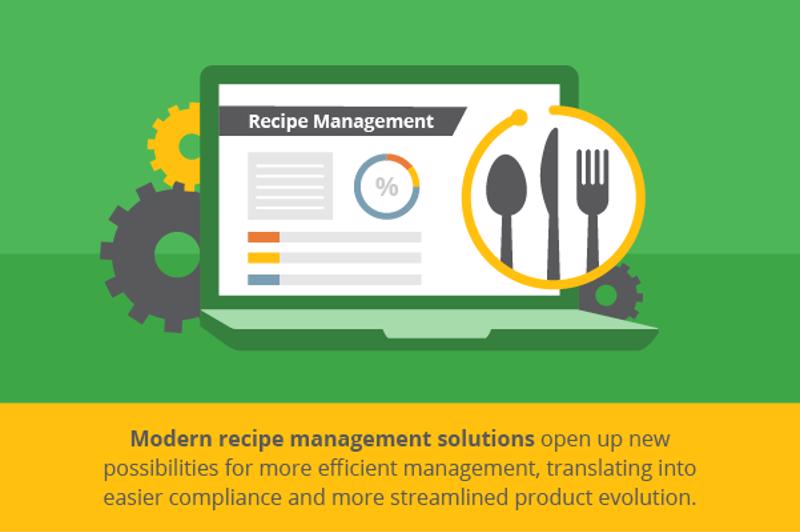Walking into a supermarket, bodega or even gas station convenience store in 2020 is a very different experience than it was just a decade ago. Products that were once somewhat obscure, such as plant-based proteins and milks, are now mainstream. Overall, there’s just a much wider range of foods, beverages, vitamins and supplements available to the public.
For manufacturers of these packaged goods, this long-term expansion in product variety has been accompanied by a similar uptick in regulations and compliance requirements from bodies such as the FDA in the U.S. Everything from proper labeling of organic, gluten-free and non-GMO ingredients, to accurate listings of the any allergens present, is now a central challenge for companies in this space.
Consumers have also become much more sophisticated in their tastes and need access to relevant information. They want to know about each product’s nutrition, allergen content and sourcing, and accordingly the Nutrition Facts Label — which the FDA has revised in recent years to provide additional information — is more important than ever, as are regulations like Proposition 65 in California.
However, the industry’s recipe management processes are, in many cases, not up to all of these new operational and regulatory challenges . Deep, continuous and holistic product management throughout their supply chains is essential, but many recipe management paradigms don’t provide such capabilities.
What are some of the big challenges in recipe management?
Traditional recipe management has numerous pain points that complicate compliance and consistency:
- Products have to be labeled in compliance with ever-evolving FDA rules (e.g., for the Fact Panel) and other complex regulations like Proposition 65, which is enforced by California’s Office of Environmental Health Hazard Assessment.
- The stakes are high for accurate certifications and allergen listings, such as USDA Organic, vegan, gluten-free, dairy-free, paraben-free, and more.
- Inventory can easily become outdated and inaccurate, making it more difficult to fulfill orders and keep needed items in stock — not to mention ensure up-to-date FDA compliance.
- Important product-related data is siloed in such a way that it’s difficult to get a holistic view of the supply chain at any specific point in time or ensure proper formulation. This also increases risks around data accuracy for regulatory and public safety purposes.
- Making changes at scale is tough. Accordingly, manufacturers can struggle to make sure that all of their products across their entire supply chain are compliant.
- The issue of compliance is compounded by the fact that different laws apply in different jurisdictions. For example, an ingredient acceptable in the U.S. might be banned in the European Union. Likewise, Norway, for instance, regulates many more allergens than the U.S., and so manufacturers have to ensure that they’re addressing these divergent regulatory requirements.
- As product definitions evolve (e.g., with new information about nutrients, vitamins, etc.), old and highly manual processes are ill-suited to implementing updates at scale. The 2016 revisions to the FDA Facts Label is a good case in point for how regulators frequently change their requirements.
- Cybersecurity is also an issue in an old-fashioned recipe management paradigm, as the disparate and aging systems in use can leak information or be mismanaged.
- On that note, managing recipe information in spreadsheets or with predominantly on-prem solutions raises the risk of human error, which can trigger delays and noncompliance.
That sounds like a lot of bad news, but it doesn’t have to be read that way. Modern recipe management solutions open up new possibilities for much more efficient management, translating into easier compliance and more streamlined product evolution as regulations change.

How Inspirage Recipe Management makes life easier
Many critical systems of record and business applications have been moved into the cloud in recent years, and recipe management solutions are no exception. In fact, the Inspirage Recipe Management Solution is built on top of the Oracle PLM cloud, with key capabilities for helping manufacturers gather as much data as possible and ensure that that information is always up-to-date. Specific features include:
Automatic calculations
Ingredient definitions and quantities can be easily created and then processed via automatic calculations, which ensure they’re accurate and up-to-date. That helps greatly with overall product compliance and safety.
Change management
What would happen to your product line if you changed the amount of a single ingredient, like a sweetener or preservative? A recipe management solution removes the guesswork that once accompanied such change, instead providing a holistic view of how the portfolio would be affected.
Supply chain visibility
Gaining greater control over your recipes requires knowing what’s going on throughout your supply chain. What regulatory obligations do you currently need to meet? Do you have the right suppliers and partnerships to get compliant ingredients on the timetable you need? Inspirage Recipe Management makes it simpler to answer these questions.
To learn more, check out this product data sheet, or contact our expert team for support.
